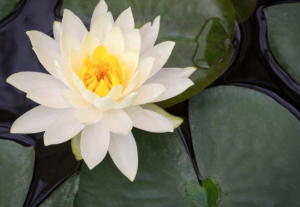
In growing older, a woman once told me her knee became sore and weak. She began to use a cane, moving slowly and more cautiously than before.
While taking walks outside, she began to notice other people with difficulty walking. Her eyes couldn’t help but see people who used canes, crutches and walkers, who walked slowly or with limps. Suddenly the world seemed full of people like herself, whose steps were unsteady. She saw them struggle and felt their pain. She worried for their safety and prayed in her heart they would be all right. These thoughts spontaneously arose from within her.
These people who had trouble walking did not suddenly increase in number, making them more visible. Rather, the woman’s own pain stirred in her a sense of empathy and awareness, opening her eyes to people who were always around her, but whom she had not seen. Before, they were strangers and invisible, but now she felt a kinship with them.
I’m reminded of a saying: “We live in a dream and go through life in a fog.” We think we know what’s important—money, possessions, status, power, knowledge, accomplishments, friendship and love. We think we must focus on our goals and ourselves, and our families and friends. We think positive and avoid negative thoughts.
Imagine a glass half filled with water. When asked how much water is there, you may say it’s “half full” or “half empty,” depending on your mood. Either answer is correct, right?
Imagine the water in the glass represents all of those positive things we think are important in life—money, possessions, friends, etc. To focus on the water is only seeing half the glass. Ignoring the “empty half” makes us blind to the other half of life.
In this example, the empty part symbolizes negative things we want to avoid and not think about—failure, loss, hardship, frustration and pain, among others. It represents sickness, aging and death. Perhaps we feel thinking about these things will drag us down and prevent us from reaching our goals. Yet, these things are part of—in fact inseparable from—the so-called positive side of life, as the glass of water shows us.
To see only the water is to see life only as “positive.” No wonder “we live in a dream and go through life in a fog.” We see only what we want to see. This is natural. This is human nature.
However, this view of life sooner or later comes face-to-face with the painful reality of existence. We become sick. We grow old. Our loved ones pass away. We face death ourselves. We fail to find permanent happiness. When the only side of life we know crumbles and disappears, fear and anxiety arise to take its place.
We are encouraged by the Buddha to see all of life—the full and the empty, the positive and the negative, life and death. This life is not about “I” at the center in pursuit of desires. It is about awakening to the world of wisdom and compassion around us.
You may read these words and think, “What a nice thought,” but your heart will not change. Again, this is human nature. Freud called this strong sense of self the “ego.” The Buddha said this “ego” is a person’s greatest impulse. That’s why it’s so difficult to awaken to truth through our own will, or self-efforts.
In the Samyutta Agama sutra, the Buddha told of “The Parable of the Four Horses.” He explained: “There are four kinds of horses. The first horse gallops merely at the sight of a whip. The second horse gallops when the whip touches its hair. The third horse gallops when the whip touches its skin. The fourth horse only begins to gallop when the whip touches its bones.”
Most of us are like the fourth horse. We may suspect there’s something missing in life, but we are unaffected. We hear about this truth but are unmoved. We may see truth close by, but cannot grasp it. Not until our flesh begins to bleed are we moved.
Shortly after my father passed away a few years ago, people began to tell me, “I lost my father recently,” or “My mother passed away a few months ago” or “My parents have been gone for a few years.” Suddenly I felt what others must have felt in losing a parent, but their suffering had been invisible to me. A great many of us share this common human experience, yet it had not register in my consciousness until I experienced this loss in my own life. I felt a sense of shared pain with others.
The woman with the cane, without knowing it, felt the same way. Experience opens our eyes. This “other side” of life opens our eyes. Shinran Shonin called it Great Compassion that awakens us. This is how the invisible becomes visible.
-Rev. Ken Yamada is editor at Shinshu Center of America

